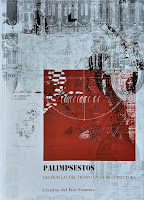Children of Dune (1976)
Frank Herbert (1920-1986)
609 pages
[Note: although I make it a point to avoid spoilers in my reviews, this is the third in a trilogy, and it's not possible to write about it without including some context from the earlier books, Dune and Dune Messiah. So, if you haven't read those first two yet, I suggest you jump back to my reviews of them, linked to from the titles.]
At the end of the second book of the Dune trilogy, Dune Messiah, the Emperor Paul Atreides, Muad’Dib, wanders off into the desert to die, having been blinded during an uprising against his rule. Shortly before, he learned that his wife had died while giving birth to twins, who he has named Leto and Ghamina.
The third book, Children of Dune, opens with the twins now nine years old. Though still children in appearance, both are pre-born – filled since in their mother’s womb with awareness and access to the lives and knowledge of all their ancestors, going back to long-forgotten Earth. Beyond that, they also share the profound connection that exists between so many twins.
Though young, the pair already face a host of dangers. Their aunt, Alia, has succeeded her brother to rule Dune for House Atreides, and schemes to keep her brother’s progeny from weakening her position on the throne and eventually taking it for themselves. Their grandmother, as representative of the Bene Gesserit order, arrives back on Dune for the first time since her son’s death, wishing to be reunited with her grandchildren, though her true intentions remain a mystery. In a distant star-system, the House Corrino, which Paul had overthrown in his rise to become Emperor, looks to restore their leadership, targeting the twins as an impediment to their desires. And, finally, a mysterious, blind preacher wanders the capital of Dune, questioning the ruling order.
Unsure of whom they can trust, and witness to the chaos that has begun to grow around the rule of Alia, the twins have their own plans for the future of Dune and the Empire. But, can they survive the forces arrayed against them to make their visions a reality?
This third book in the Dune series lies somewhere between the first two in terms of the balance of action and rumination. In the opening novel, Paul grows into his powers amid a heady mixture of intrigue and war that eventually lead to a decisive victory and his assumption of power as Emperor of the federation of planets. This sets the stage for the second book, in which Paul struggles as Emperor with the choices he has made and the violence they have wrought, as well as with the delicate, seemingly impossible task of using his prescience to navigate the Empire toward a peaceful future, even as conspiracies, plots and general human inconstancy complicate his task. Largely foregoing the action-adventure elements of the first book, Herbert spends significant portions of the second taking readers inside Paul’s head, reflecting on, and grappling with, the inherent and profound challenges of rulers from time immemorial.
Now, in Children of Dune, with power up for grabs after Paul’s departure, the action picks up again a bit. Nonetheless, with the palace intrigues and groups grasping for power – whether the twins themselves, their aunt Alia, their grandmother Jessica, or the heads of House Corrino – Herbert again has readers inside the heads of a variety of conspirators, as they consider the ends they wish to achieve, and the perilous paths they pursue.
Ultimately, the action and adventure present in all three of these books serve mostly as a vehicle for Herbert’s true goal: exploring the challenges of leadership, the complex and ever shifting motivations of those who pursue it, and the ceaseless struggle they have to hold on to it once they have it. These stories may be set in a distant future, when humanity has spread far from their Earthly home, but the tale Herbert tells goes back to the earliest kings – and resonates strongly too with the power struggles we witness in the present day.
Other notes and information:
Have you read this book, others by this author, or even similar ones by other authors? I’d enjoy hearing your thoughts.
Other of my book reviews: FICTION Bookshelf and NON-FICTION Bookshelf

